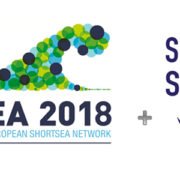Predictive Applications Take Supply Chains into the Future
Anything can happen in the supply chain–trucks break down, ships get rerouted, goods are stolen, parts are faulty, ports close, dockworkers go on strike, and supplier production lines go down. This uncertainty causes companies to buffer inventories beyond what is necessary to service forecasted demand just in case something goes wrong.
But this is an expensive process that ties up working capital and often leaves companies with unused excess inventory. In fact, studies have shown the annual additional cost of holding excess inventory can be 25-32 percent, according to The Retail Owners Institute.
Many companies handle supply chain anomalies with reactive planning systems. They quickly try to remediate problems with optimization algorithms once anomalies occur. But this is tantamount to looking in the rear-view mirror. Plus, lead times to ship products, procure new goods, or produce new goods are often lengthy, making it impossible to react to meet customer demand when supply suddenly changes. One new approach to dealing with supply chain uncertainty is to use machine learning to predict what might go wrong and use that as the basis for the supply chain planning processes. This approach uses scenarios constructed from predictive models.
Machine learning tools build these models from available historical data that can be applied to future scenarios. For example, let’s assume a company has 1,000 ASNs (advance shipment notices) in flight at any given moment. While each of those ASNs has a scheduled delivery date, if a planner, supply manager, or someone in receiving is asked where they all are, they will tell a story about a scheduled ASN that is expected to be late. How do they know? It’s because they have access to data that gives them this predictive signal and because they have learned how to pattern match that data to predict supply chain events.
INTRODUCING ONLINE PREDICTIVE PROCESSING
A new data platform called online predictive processing (OLPP) – essentially predictive applications – can automate this insight. It can create expected “scenarios” directly from machine learning models that predict which ASNs are likely to be late and estimate how late they will be. With OLPP, machine learning models can provide every ASN an “expected” date in addition to its scheduled date, creating a new “scenario” comprised of all live ASNs and their expected deliveries.
THE POTENTIAL OF WHAT-IF SCENARIO PLANNING
Scenarios are powerful. 3PLs can use them to warn receiving companies of anticipated changes, giving them an opportunity to plan around problems. 4PLs and manufacturers can do even more. They can propagate scenarios down their supply chains, surfacing production orders and even sales orders that are impacted by the anticipated events. This tool can plan around shortages, satisfy customers, and produce predictable revenues.
OLPP is a new technology that enables both the analytical processing required for the learning of predictions, as well as so-called “transactional” processing, to model inventory availability and power what-if scenario planning.
To learn models, OLPP platforms process volumes of historical ASN data such as carrier, source, destination, mode, port, size, weight, shipper and receiver, as well as exogenous data such as fleet data, weather data, and even news summaries. OLPP uses this past experience to train models that, when deployed and applied to live ASNs, provide a prediction of how late an ASN will be based on all of the experiential data it has seen.
Then, the OLPP platform can set the expected delivery dates according to these predictions and project inventory levels down the supply chain. The application can surface any expected shortages or overages based on these expectations and even let planners move other orders on the schedule in order to resolve problems.
The power of this approach to supply chain management is that instead of buffering excess inventory unnecessarily, trying to forecast supply chain glitches, or just reacting to them when they happen, companies can use data to train models to predict when they are “likely” to happen and use planning tools to proactively plan around these expected events, saving millions of dollars in inventory, vastly improving supply chain efficiency, and ultimately satisfying customers downstream.
Source: Inbound Logistics



 Ministers from the Transport, Telecommunications and Energy Council of the EU met in Brussels to consider how policy can continue to help implement sustainable transport systems where energy consumption is low, but mobility for users is improved through better transport times and routes.
Ministers from the Transport, Telecommunications and Energy Council of the EU met in Brussels to consider how policy can continue to help implement sustainable transport systems where energy consumption is low, but mobility for users is improved through better transport times and routes.
